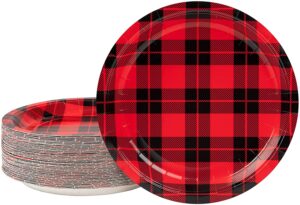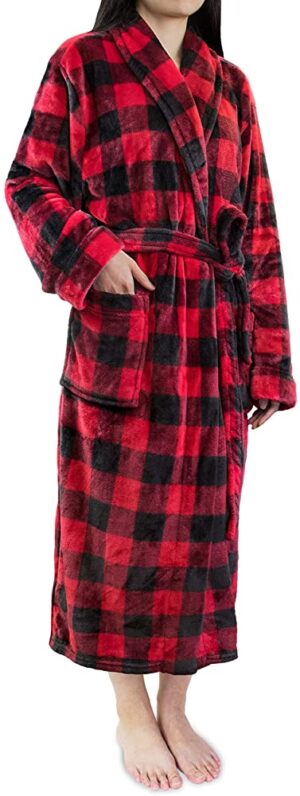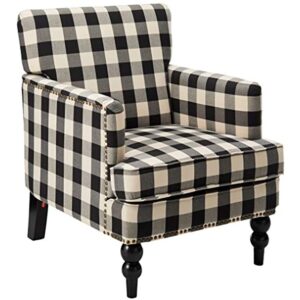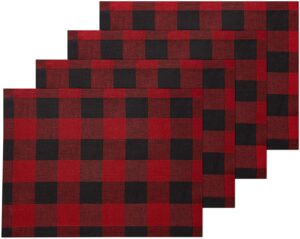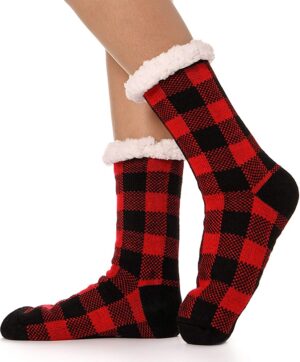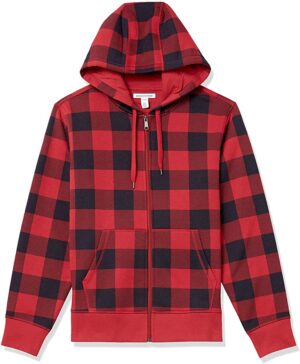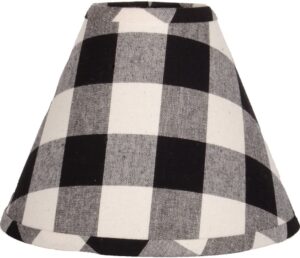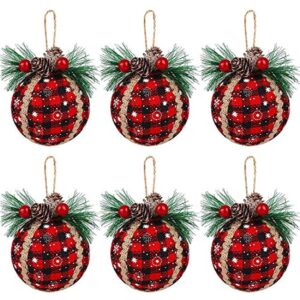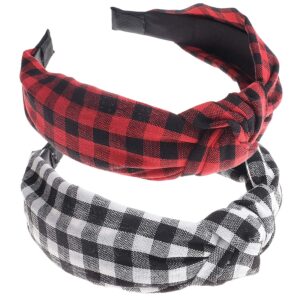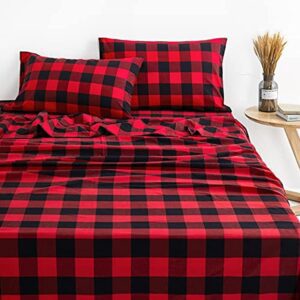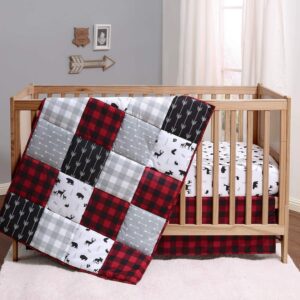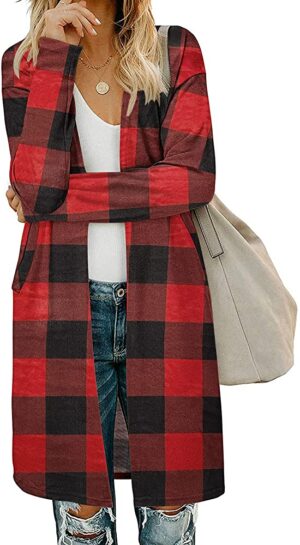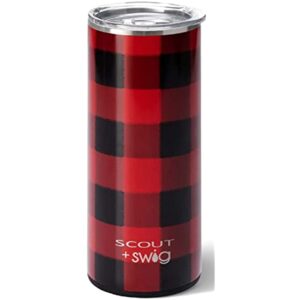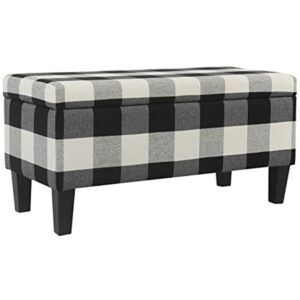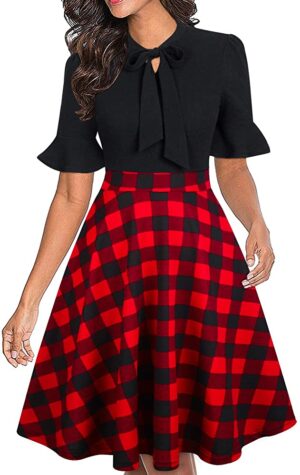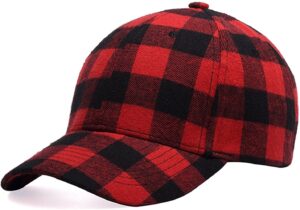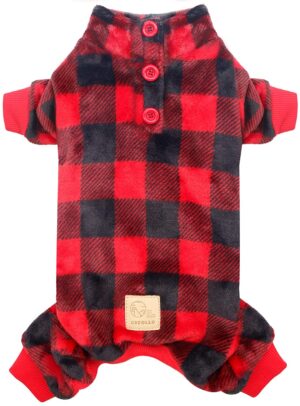Are you considering giving your dining chairs a fresh new look? Before you embark on this exciting DIY project, it’s essential to determine how much fabric you’ll need to cover each chair. Knowing the right amount of fabric will not only prevent you from running out midway through the project but also help you estimate the cost and make a more accurate plan. In this article, we will guide you through the steps to calculate the fabric required for covering a dining chair, ensuring that you have all the information you need to successfully revamp your chairs. So let’s get started!
Conclusion: In conclusion, calculating the amount of fabric needed to cover a dining chair is a straightforward process that can save you time, money, and avoid any last-minute surprises. By following the steps outlined in this article, you’ll be able to transform your dining chairs into stylish and inviting seats, creating a beautiful focal point in your dining area. So gather your supplies and get ready to give your dining chairs a stunning makeover!
Understanding the Chair Covering Process
When it comes to giving your dining chairs a fresh new look, covering them with fabric is a great DIY project to consider. Not only does it allow you to customize the appearance of your chairs, but it also provides an opportunity to save money compared to buying new ones. Before you dive into this project, it’s essential to understand the chair covering process and the key steps involved. This article will guide you through the basics, from upholstery to fabric selection, and provide helpful tips along the way.
The basics of upholstery
Upholstery is the art of covering furniture with fabric, giving it a softer, more visually appealing appearance. It involves techniques such as padding, springs, and stitching to create a comfortable and aesthetically pleasing seat. Before you start covering your dining chair, it’s essential to have a basic understanding of upholstery concepts. This will help you achieve a professional-looking result. Don’t worry; you don’t need to be an expert to successfully cover your dining chairs. With the right tools, materials, and guidance, you’ll be able to tackle this project with confidence.
The importance of precise measurements
One crucial aspect of the chair covering process is accurate measurements. By taking precise measurements of your dining chair, you’ll ensure that the fabric fits correctly and looks seamless once applied. Measuring the seat, backrest, and arms (if applicable) is crucial for obtaining the right amount of fabric needed for the project. It’s also essential to consider seams and hems in your measurements to account for any additional fabric required. With precise measurements, you’ll avoid running out of fabric or wasting excess material, saving time and money in the process.
The role of fabric in chair covering
The choice of fabric greatly influences the overall look and feel of your dining chairs. It plays a crucial role in the chair covering process, as it determines the durability, comfort, and style of the final product. When selecting fabric for your dining chairs, consider factors such as the chair’s location, usage patterns, and your personal preferences. Different fabrics have varying characteristics, such as durability, stain resistance, and breathability. Understanding the different types of fabric and their benefits will help you make an informed decision and ensure a successful chair covering project.
The Tools and Materials You Will Need
Before you embark on your chair covering project, it’s important to gather all the necessary tools and materials. Having the right equipment will make the process smoother and more efficient. Here are the essential tools you’ll need for covering a dining chair:
Essential tools for covering a dining chair
- Upholstery staple gun: This tool is crucial for attaching the fabric to the chair frame securely. Choose a staple gun that is compatible with the size of staples recommended for your project.
- Staples: Opt for staples specifically designed for upholstery projects. These staples are typically longer and thicker than regular ones, offering better holding power.
- Scissors: Sharp fabric scissors are essential for cutting the fabric accurately and cleanly.
- Measuring tape: Use a flexible measuring tape to measure your dining chair’s dimensions accurately.
- Sewing machine (optional): If you prefer to sew your own cushion covers or make modifications to the fabric, a sewing machine will come in handy.
Types of fabrics suitable for dining chairs
When it comes to selecting the fabric for your dining chairs, there are several options to choose from. The ideal fabric will depend on your preferences and the overall aesthetic you want to achieve. Some common types of fabric suitable for dining chairs include:
- Cotton: A versatile and durable fabric that comes in various colors and patterns. It is breathable and suitable for everyday use.
- Polyester: Known for its stain resistance and easy maintenance. Polyester fabrics are a popular choice for families with children or pets.
- Linen: A natural fabric that exudes a sophisticated and elegant look. Linen is highly breathable but may wrinkle more easily.
- Velvet: A luxurious and soft fabric that adds a touch of opulence to your dining chairs. Velvet is best suited for formal and occasional use.
- Leather: A classic and timeless choice, leather provides durability and an upscale appearance. It requires regular maintenance to keep it in good condition.
Additional materials required for the project
In addition to the essential tools, you’ll also need a few extra materials to ensure a smooth chair covering process. These may include:
- Batting or foam padding: This material provides cushioning and enhances the comfort of your dining chairs. Choose the appropriate thickness and density for your desired level of comfort.
- Upholstery fabric adhesive: Adhesive spray helps to secure the batting or foam padding to the chair, preventing it from shifting.
- Thread: If you plan to sew your own cushion covers or make modifications, make sure you have matching thread on hand.
Now that you have an understanding of the tools and materials required, let’s move on to the next critical step: accurately measuring your dining chair.
How to Accurately Measure Your Dining Chair
Proper measurements are crucial for a successful chair covering project. Taking accurate measurements of your dining chair will ensure that your fabric fits correctly and looks seamless once applied. It’s essential to measure the seat, backrest, and arms (if applicable) to determine the required amount of fabric. Let’s dive into the step-by-step process of measuring each component:
Measuring the seat
To measure the seat of your dining chair, follow these steps:
- Start by placing the measuring tape at the front edge of the seat, where it meets the backrest.
- Extend the tape measure across the width of the seat to the opposite edge.
- Note down the measurement in inches or centimeters, depending on your preference.
- Repeat this process for the depth of the seat, measuring from the front edge to the backrest.
Measuring the backrest
To measure the backrest, proceed as follows:
- Begin at the top of the backrest, where it meets the seat.
- Place the measuring tape vertically down the backrest until you reach the desired stopping point. This could be at the bottom of the backrest or where the cover will end.
- Take note of the measurement.
Measuring the arms (if applicable)
If your dining chairs have arms, it’s important to measure them as well. To measure the arms, follow these steps:
- Start at the front edge of the arm, where it connects to the seat.
- Extend the measuring tape along the armrest’s length until you reach the desired stopping point.
- Note down the measurement for each arm.
Taking account of seams and hems
When measuring your dining chair, it’s important to account for any seams or hems you plan to incorporate into your chair covering. These extra fabric allowances ensure that the cover will fit properly and allow for a neat finish. Consider adding an extra inch or two to each measurement to accommodate the seams and hems. This allowance will vary depending on the fabric’s thickness and the sewing techniques you plan to use.
Now that you have taken precise measurements of your dining chair, let’s move on to the next step: choosing the right fabric.
Choosing the Right Fabric
When it comes to chair covering projects, choosing the right fabric is essential for achieving the desired result. The fabric you select will determine the overall appearance, comfort, and durability of your dining chairs. To make an informed decision, consider the following factors when choosing the fabric:
Factors to consider when choosing fabric
- Durability: Consider the fabric’s durability, especially if you anticipate frequent use of your dining chairs. Fabrics made from natural fibers such as cotton and linen are generally durable, while synthetic fabrics like polyester offer enhanced stain resistance.
- Style and aesthetics: Determine the overall style or theme you want to accomplish in your dining space. Consider whether you prefer bold patterns, solid colors, or textured fabrics that complement your existing decor.
- Maintenance: Evaluate the fabric’s maintenance requirements. Some fabrics may require special care, such as dry cleaning, while others can be machine washed.
- Comfort: Take into account the comfort level you desire. Fabrics like velvet and padded textiles offer a soft and cozy feel, perfect for long dinner gatherings.
Different types of fabric and their characteristics
Here are some common types of fabric suitable for chair covering projects, along with their characteristics:
- Cotton: A natural fabric known for its breathability and comfort. Cotton is available in a wide range of patterns and colors, making it suitable for various styles.
- Linen: Another natural fabric that exudes elegance and sophistication. Linen has a slightly textured appearance and offers excellent breathability.
- Velvet: A luxurious fabric with a soft and plush feel. Velvet adds a touch of opulence to your dining chairs and is often used for formal and occasional seating.
- Polyester: A synthetic fabric that is durable, easy to maintain, and resistant to staining and fading. Polyester is an excellent choice for high-traffic dining areas.
- Leather: A classic and timeless choice, leather offers durability, elegance, and a touch of luxury to your dining chairs. It requires regular care to maintain its appearance.
Benefits and drawbacks of common types of fabric
To help you make an informed decision, let’s explore the benefits and drawbacks of some common types of fabric:
-
Cotton:
- Benefits: Breathable, comfortable, and available in a wide range of patterns and colors.
- Drawbacks: Prone to wrinkling and may require more frequent washing or spot cleaning.
-
Linen:
- Benefits: Provides an elegant and sophisticated look, highly breathable, and has a natural resistance to pilling.
- Drawbacks: More prone to wrinkling and typically requires dry cleaning.
-
Velvet:
- Benefits: Luxurious and soft texture, adds a touch of opulence to your dining chairs.
- Drawbacks: Can be more challenging to clean and maintain, may show wear and tear over time.
-
Polyester:
- Benefits: Durable, stain-resistant, fade-resistant, and easy to clean.
- Drawbacks: Some people find it less breathable compared to natural fabrics.
-
Leather:
- Benefits: Timeless and luxurious appearance, durable, easy to wipe clean.
- Drawbacks: Requires regular maintenance, may be less suitable for warm climates.
Consider these factors and characteristics when selecting the fabric for your dining chair covering project. It’s important to strike a balance between aesthetics, comfort, and practicality to ensure a successful outcome.
Calculating the Amount of Fabric Needed
Once you’ve chosen the fabric for your dining chair covering, it’s essential to determine the amount of fabric needed for the project. Calculating the fabric quantity accurately will ensure that you purchase the right amount, avoiding shortages or wastage. Here’s how to calculate the fabric needed based on your chair’s measurements:
How to calculate fabric quantity based on measurements
To determine the fabric quantity required, you’ll need the measurements you took earlier. Follow these steps:
- Measure the width and depth of the seat, backrest, and arms (if applicable), including any allowances for seams and hems.
- Multiply the measured width and depth of each component to obtain the total area in square inches or centimeters. For example, if the seat measures 18 inches wide and 16 inches deep, the total area of the seat would be 18 inches x 16 inches = 288 square inches.
- Add up the total area for each component to obtain the overall fabric requirement for your dining chair.
- Convert the total square inches or centimeters into yards or meters, depending on the unit of measurement used by fabric suppliers.
The importance of allowing extra fabric
It’s crucial to allow extra fabric when calculating the required amount. The extra fabric allows for pattern matching, seam allowances, hems, and any unforeseen mishaps during the covering process. Adding an extra 10-20% of fabric to your calculations is a good rule of thumb. This extra amount also comes in handy if you plan to make additional accessories such as cushion covers or matching table runners. By allowing for extra fabric, you’ll ensure that you have enough to cover your chairs seamlessly and avoid any disappointment or delays during the project.
Dealing with pattern repeats in the fabric
If you have chosen a fabric with a pattern, it’s essential to consider the pattern repeat when calculating the fabric quantity. The pattern repeat refers to how often the pattern is repeated on the fabric width. Depending on the size of the pattern repeat, you may need to purchase additional fabric to ensure the pattern matches up correctly across your dining chair seats. Consult the fabric manufacturer’s instructions or the store staff for guidance on pattern repeat and how it affects your calculations. Purchasing a little extra fabric is always prudent to ensure a polished and cohesive look in your finished chairs.
Now that you know how to calculate the fabric required and account for pattern repeats let’s move on to purchasing your chosen fabric.
Purchasing Your Fabric
With your measurements and fabric calculations in hand, it’s time to purchase the fabric for your dining chair project. To make an informed purchase, consider the following tips:
Where to buy fabric for dining chair covering
There are various options when it comes to buying fabric for your dining chair covering project. Here are some common places to consider:
-
Fabric stores: Local fabric stores often have a wide range of options, allowing you to see and feel the fabric in person. Store staff can also provide valuable advice and guidance.
-
Online fabric retailers: Online retailers offer convenience and a vast selection of fabrics. Look for reputable retailers with good customer reviews to ensure quality and prompt delivery.
-
Home decor stores: Some home decor stores sell upholstery fabric suitable for dining chair projects. Check their fabric section for options.
Understanding prices and quality
Fabric prices can vary greatly depending on factors such as the type of fabric, brand, and store. It’s essential to set a budget for your project to guide your fabric selection. Keep in mind that higher-priced fabrics are not always synonymous with better quality. Consider the fabric’s durability, comfort, and maintenance requirements when evaluating the price. Quality fabrics may cost more upfront but can provide long-lasting value and save you money in the long run.
Checking for flaws or damage before purchase
Before finalizing your fabric purchase, it’s essential to inspect it for any flaws or damage. Unroll the fabric and examine it for stains, tears, or color inconsistencies. If purchasing online, check the product description and customer reviews for any potential issues mentioned by previous buyers. Flawed fabric may compromise the look and durability of your dining chairs, so it’s crucial to ensure you’re getting a high-quality piece.
Once you have purchased your fabric, it’s time to prepare your dining chairs for the covering process.

Preparing Your Chair for Fabric Covering
Before you can cover your dining chairs with fabric, it’s important to prepare them properly. This preparation process ensures that the fabric adheres well to the chair and results in a professional-looking finish. Here are the key steps for preparing your chairs:
Removing the old fabric
If your dining chairs already have fabric covers, you’ll need to remove them before proceeding with the new covering. Carefully detach the old fabric, making sure to keep track of any fasteners or attachments that may be reusable. Take note of the chair’s construction and any repairs that may be necessary, as we will address them in the next section.
Repairing any damage to the chair
Inspect your dining chairs for any damage or wear that needs repair. This could include loose joints, broken or missing parts, or wobbly legs. Reinforce the joints with wood glue or replace any damaged components to ensure the chair is structurally sound before covering it. By addressing these repairs beforehand, you’ll ensure that your fabric covering has a sturdy foundation.
Priming the chair for new fabric
To prepare the chair for the new fabric covering, consider priming the surfaces that will come into contact with the fabric. This step is especially important for wooden chairs, as it helps to seal the wood and prevent any bleed-through of stains or dyes onto the fabric. Apply a coat of primer suitable for your chair’s material and allow it to dry completely before moving on to the covering process. Priming not only protects your fabric from potential damage but also enhances the final appearance of your freshly covered dining chairs.
With your dining chairs prepped and ready, let’s move on to the exciting part: covering them with fabric!
How to Cover Your Dining Chair with Fabric
Now that you’ve completed the necessary preparations, it’s time to cover your dining chairs with fabric. Follow these step-by-step instructions to achieve a professional-looking result:
Step-by-step process of attaching fabric to the chair
- Lay your fabric flat on a clean surface, pattern-side down.
- Position your chair seat or backrest (depending on which part you’re covering) on top of the fabric, aligning it with the desired pattern placement.
- Starting from one side of the chair, pull the fabric taut and secure it to the chair frame using an upholstery staple gun. Begin with the center of each side and work your way towards the corners, spacing the staples evenly.
- As you reach the corners, create neat folds or pleats in the fabric to prevent excess bulk. Secure the folds with additional staples, ensuring the fabric remains taut.
- Continue stapling the fabric along each side until you reach the starting point, ensuring the fabric is smooth and free of wrinkles along the way.
- Trim any excess fabric, leaving a small allowance for seams or hems, depending on your desired finishing technique.
- Repeat the process for each chair, taking care to align the pattern consistently if applicable.
Tips for a smooth and professional finish
To achieve a smooth and professional finish, consider the following tips:
- Pull the fabric taut: Ensure the fabric is pulled tightly across the seat or backrest to avoid wrinkles or sagging.
- Use sharp scissors: Make clean and precise cuts to the fabric, ensuring a neat appearance.
- Check the alignment: Regularly step back and assess the pattern alignment and general appearance of the fabric as you staple it to the chair. Adjust as necessary to achieve a cohesive and visually pleasing result.
- Confidence is key: Approach the covering process with confidence and patience. Staple confidently and evenly to create a secure and professional-looking finish.
Dealing with difficulties during the covering process
Covering chairs with fabric can sometimes present challenges. Here are some tips for addressing common difficulties:
- Wrinkles or bulges: If you notice wrinkles or bulges forming in the fabric as you staple, remove the staples and adjust the tension before restapling.
- Tricky corners: Corners can be challenging when keeping the fabric smooth and wrinkle-free. To tackle this, secure the fabric with additional staples and create neat folds or pleats to distribute any excess fabric.
- Pattern matching: If you’re working with a fabric pattern that requires matching across multiple chairs, proceed slowly and plan each cut and staple placement carefully. Take the necessary time to align the pattern consistently to achieve a cohesive look.
Now that your dining chairs are expertly covered with fabric, let’s discuss how to maintain their newly transformed appearance.

Maintaining Your Newly Covered Dining Chair
To keep your fabric-covered dining chairs looking fresh and beautiful, regular maintenance is key. Here are some essential tips for maintaining your newly covered chairs:
Effective cleaning methods for different fabrics
Different fabrics require specific cleaning methods to ensure their longevity. Here’s a general guide for cleaning common types of fabric:
- Cotton: Most cotton fabrics are machine washable. Check the care instructions provided by the fabric manufacturer and follow the recommended washing temperature and settings.
- Linen: Linen fabric is typically dry clean only. If spot cleaning is required, use a mild detergent and cold water or consult a professional cleaner.
- Velvet: Avoid machine washing velvet fabric as it can cause matting or damage. Dry cleaning is recommended for most velvet fabrics. For small stains or spills, blot the area gently with a clean, damp cloth.
- Polyester: Polyester fabrics are generally machine washable. Consult the fabric’s care instructions for the recommended temperature and settings.
- Leather: Follow the manufacturer’s instructions for cleaning and conditioning leather. Avoid using any harsh chemicals that may damage the leather’s finish.
Protecting the fabric from damage
To protect your fabric-covered dining chairs from damage, consider the following tips:
- Use placemats and coasters: Encourage family members and guests to use placemats and coasters to prevent food, liquid, or other substances from coming into direct contact with the fabric.
- Avoid exposure to direct sunlight: Prolonged exposure to direct sunlight can cause fabric colors to fade. Whenever possible, position your dining chairs away from windows or use curtains or blinds to minimize sun exposure.
- Handle with care: Treat your fabric-covered chairs gently to avoid snagging the fabric or causing unnecessary wear.
Lengthening the lifespan of your fabric-covered dining chair
Taking proactive measures can help extend the lifespan of your fabric-covered dining chairs. Consider the following tips:
- Rotate the chairs: Regularly change the position of your dining chairs to distribute wear and tear evenly.
- Clean spills promptly: Treat any spills or stains on your chairs immediately to prevent them from setting into the fabric.
- Avoid pets on chairs: If you have pets, it’s best to keep them off the fabric-covered chairs to minimize the risk of damage or stains.
By following these maintenance practices, you’ll ensure that your fabric-covered dining chairs stay in excellent condition for years to come.
Conclusion
In conclusion, covering your dining chairs with fabric is a rewarding DIY project that allows you to personalize and refresh your dining space. By understanding the chair covering process, gathering the necessary tools and materials, and following the step-by-step instructions provided, you’ll be able to achieve a professional-looking result. Remember to take precise measurements, choose the right fabric, and purchase an appropriate quantity. Preparing your chairs thoroughly and using proper techniques while covering them will ensure a successful outcome. With regular maintenance and care, your fabric-covered dining chairs will continue to impress for years to come. Good luck with your project, and enjoy the satisfaction of transforming your dining chairs into beautiful and comfortable pieces that reflect your personal style.






